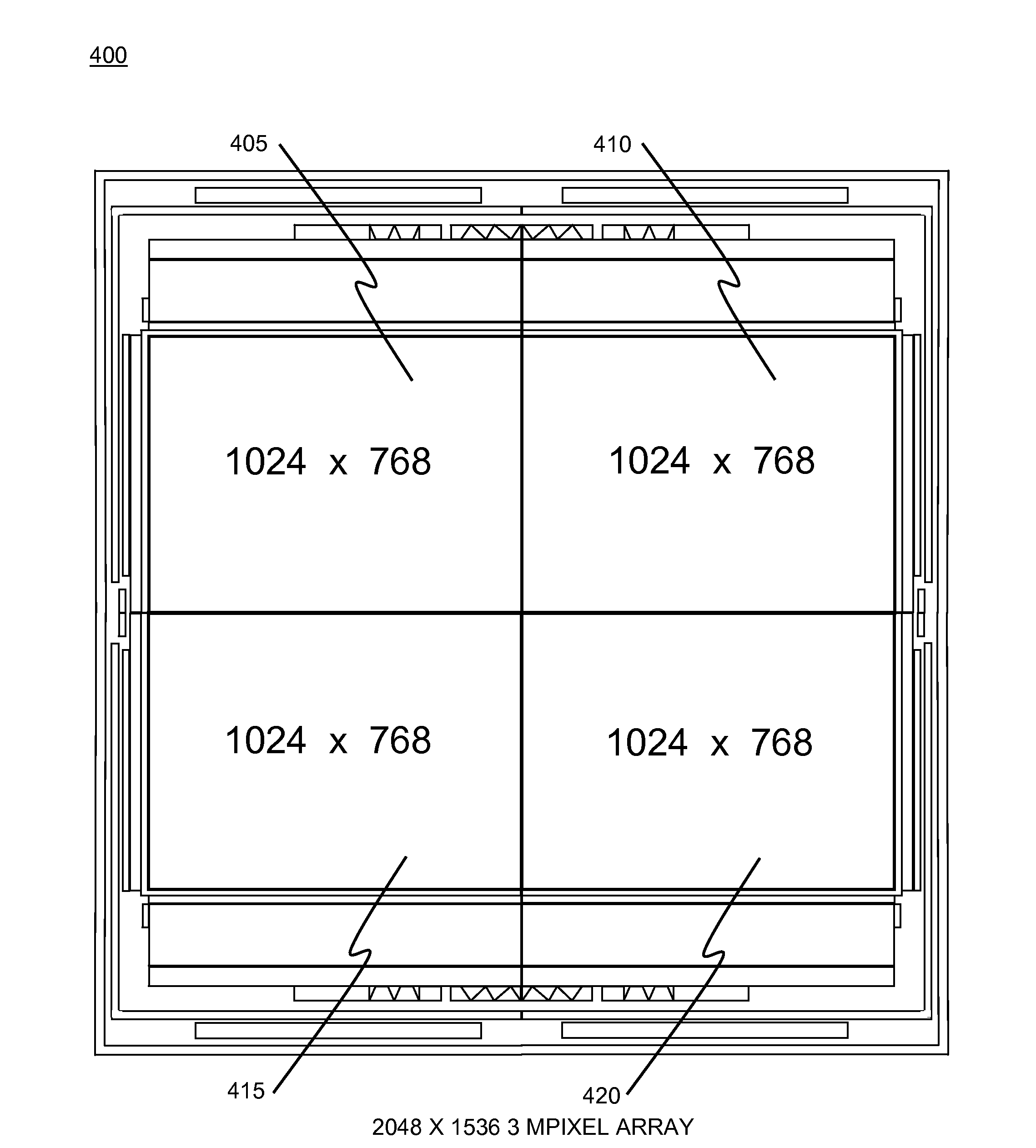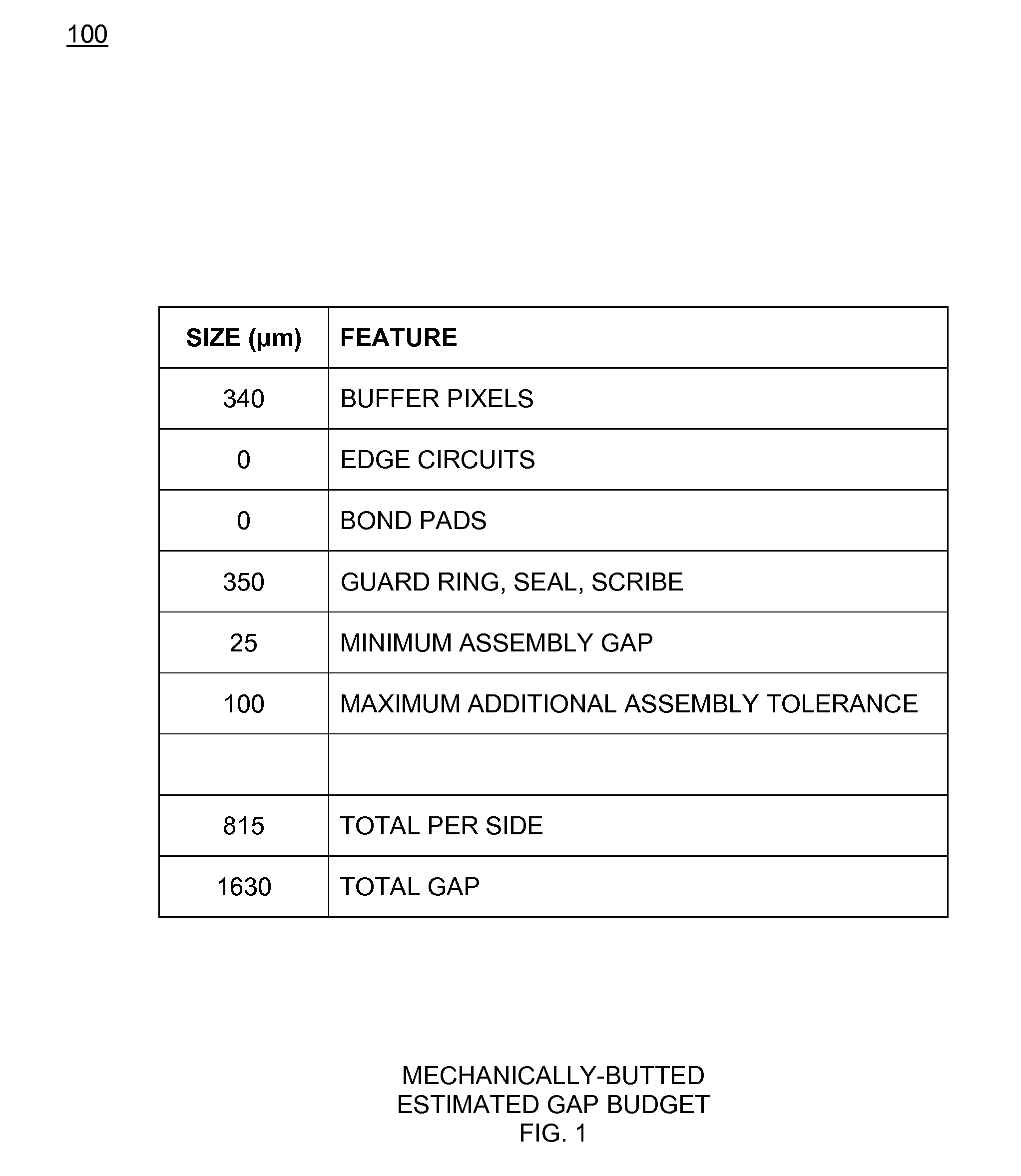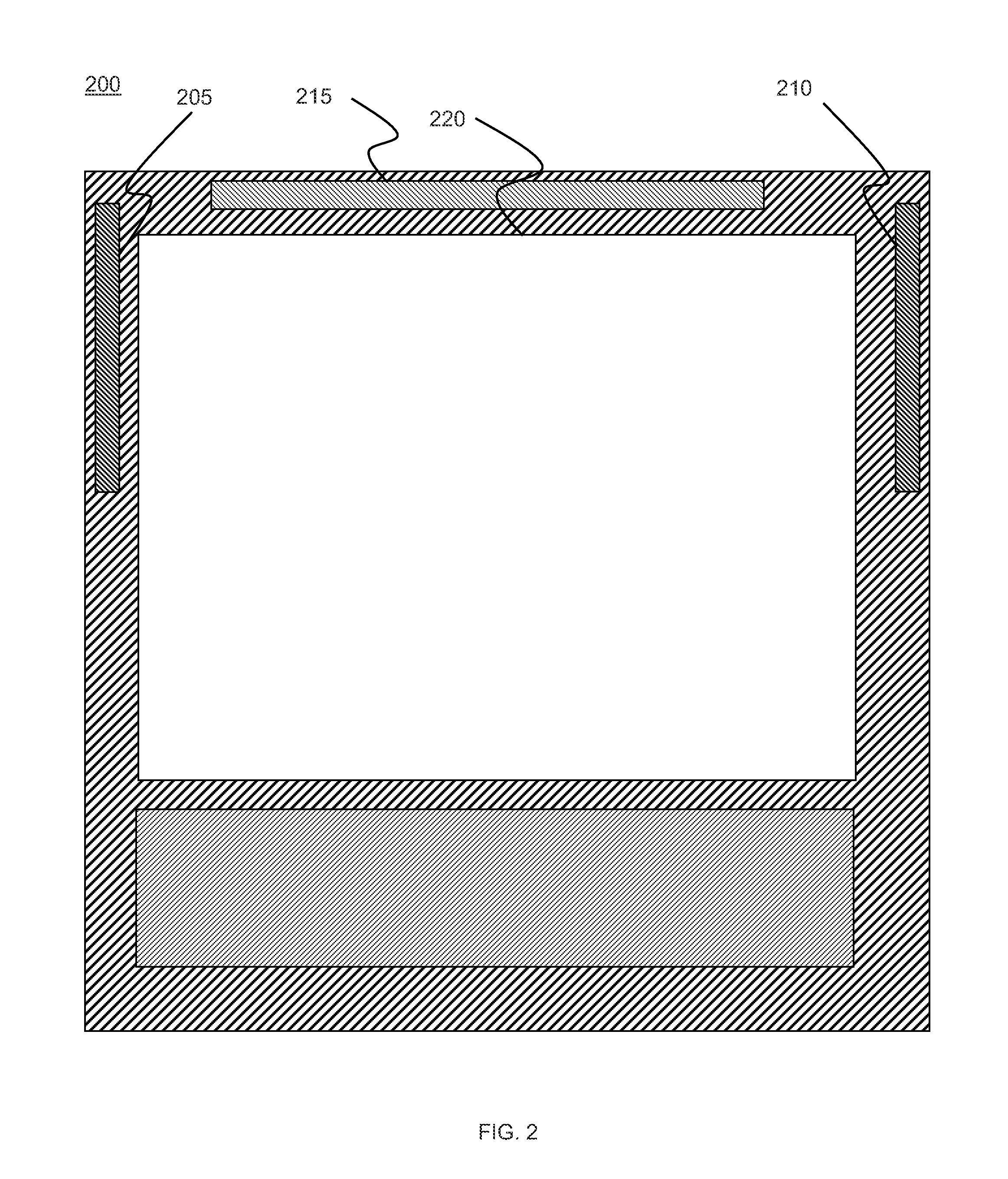On-wafer butted microbolometer imaging array
a microbolometer and imaging array technology, applied in the field of night vision devices, can solve the problems of unacceptably low yield and high cost, low reticle yields, and large investment loss, and achieve the effect of better imaging
- Summary
- Abstract
- Description
- Claims
- Application Information
AI Technical Summary
Benefits of technology
Problems solved by technology
Method used
Image
Examples
Embodiment Construction
[0026]An advantage of on-wafer buttable array imaging systems is that they achieve higher effective frame rates than a fully-scaled imaging array. In on-wafer buttable system embodiments, each component FPA runs at the frame rate typical of that size array. Additionally, the on-wafer buttable approach avoids the difficult very large scaled FPA ROIC design required to maintain the frame rate of very large scaled FPAs as the number of pixels is increased.
[0027]The ROIC / FPA modifications require only layout changes rather than actual circuit changes and are low risk projects. The types of layout changes needed for buttable FPAs are evident from the floor plan plot 200 in FIG. 2.
[0028]The strips along each of the left 205, right 210, and top 215 edges of the chip are the bond pad areas. For embodiments, the top and left sides are devoid of bond pads and provide for on-wafer seamless butting. In embodiments, a modest amount of circuitry along the top and left side of the pixel array is r...
PUM
| Property | Measurement | Unit |
|---|---|---|
| size | aaaaa | aaaaa |
| gap dimension | aaaaa | aaaaa |
| infrared imaging | aaaaa | aaaaa |
Abstract
Description
Claims
Application Information
 Login to View More
Login to View More - R&D
- Intellectual Property
- Life Sciences
- Materials
- Tech Scout
- Unparalleled Data Quality
- Higher Quality Content
- 60% Fewer Hallucinations
Browse by: Latest US Patents, China's latest patents, Technical Efficacy Thesaurus, Application Domain, Technology Topic, Popular Technical Reports.
© 2025 PatSnap. All rights reserved.Legal|Privacy policy|Modern Slavery Act Transparency Statement|Sitemap|About US| Contact US: help@patsnap.com



